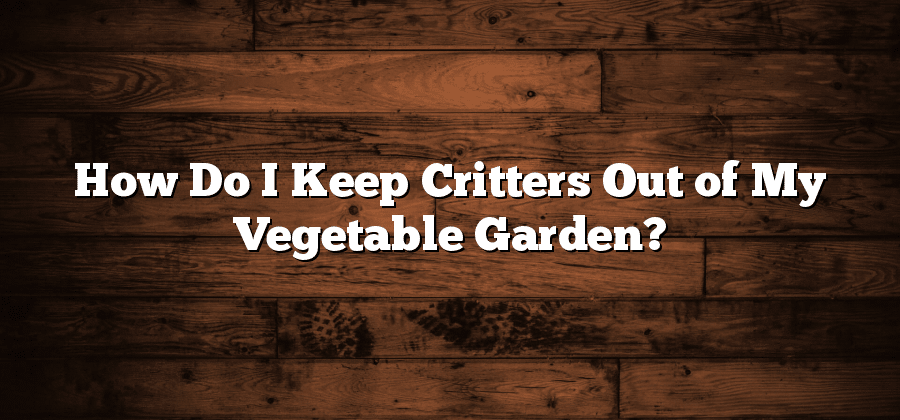Identifying Common Garden Pests and Wildlife
One of the key steps in maintaining a successful garden is being able to identify common garden pests and wildlife. Whether you are dealing with voracious insects or curious critters, understanding the different species that can potentially invade your garden is essential. By correctly identifying the culprits, you can take targeted actions to protect your plants and preserve the beauty of your garden.
Among the common pests you may encounter are aphids, those tiny, sap-sucking insects that can quickly infest your plants and cause damage. Look out for clusters of small, soft-bodied insects on the leaves, stems, or buds of your plants. Another frequent invader is the cabbage worm, which can decimate your cabbage, kale, and other cruciferous vegetables. Keep an eye out for green caterpillars with velvety skin and dark legs. Additionally, slugs and snails are notorious garden pests that can munch their way through your garden overnight. So watch for the telltale slime trails and chewed leaves during your morning garden inspections.
Understanding the Reasons Behind Critter Intrusions
In order to effectively address critter intrusions in your garden, it is essential to understand the underlying reasons behind these unwanted visits. One of the primary motivations for critters to invade your garden is the search for food. Whether it is insects, fruits, vegetables, or even birdseed, critters are opportunistic foragers and will exploit any available food sources. Consequently, the presence of a lush garden or compost pile can make your property an attractive target.
Another reason critters may infiltrate your garden is to seek shelter and protection. Many small animals, such as rabbits, squirrels, and groundhogs, are constantly on the lookout for safe havens where they can find refuge from predators and harsh weather conditions. Therefore, if your garden offers ample hiding spots, such as overgrown brush, dense shrubbery, or fallen logs, it becomes an inviting oasis for critters seeking shelter.
Implementing Physical Barriers to Protect Your Garden
When it comes to safeguarding your garden from unwanted critters, one of the most effective methods is implementing physical barriers. These barriers serve as a physical deterrent, preventing pests and wildlife from accessing your beloved plants and flowers. There are various types of physical barriers that you can utilize, depending on the specific pests you are facing and the layout of your garden.
One common and widely-used physical barrier is a fence. A sturdy fence can effectively keep out larger animals such as deer, rabbits, and raccoons, preventing them from feasting on your crops. Ensure that your fence is at least six feet tall and properly secured to the ground, as some animals are skilled at digging underneath or climbing over obstacles. Additionally, consider attaching chicken wire or mesh netting to the bottom portion of the fence to prevent smaller critters from squeezing through any gaps.
Selecting Natural Repellents and Deterrents
When it comes to protecting your garden from pests and wildlife, selecting natural repellents and deterrents can be an effective and environmentally-friendly approach. These natural methods can help keep unwanted critters at bay without the use of harsh chemicals or pesticides.
One option for natural repellents is using plant-based ingredients. Certain plants, such as marigolds and garlic, emit odor or contain compounds that repel pests. These can be planted strategically throughout your garden to create a natural barrier. Additionally, essential oils derived from plants like peppermint, citronella, and eucalyptus can be used to make homemade sprays or solutions that repel common garden pests.
Another approach to natural deterrents is using physical objects or structures that deter critters from entering your garden. For example, placing chicken wire or netting around vulnerable plants can prevent animals from accessing them. Motion-activated sprinklers or sound devices that emit high-frequency noises can also be effective in scaring away intruders.
Incorporating natural repellents and deterrents into your garden management plan can help protect your plants and maintain a healthy ecosystem. However, it’s important to remember that some methods might work better for certain pests than others, so experimentation and observation will be key in finding the most effective solutions for your specific garden.
Using Scare Tactics to Keep Critters Away
Using scare tactics to keep critters away is a common and effective method employed by many gardeners and homeowners. The idea behind scare tactics is to create an environment that deters animals from entering or damaging your garden. One popular scare tactic is the use of scarecrows. These human-like figures are strategically placed in the garden to mimic the presence of a person and scare away unwanted wildlife. Additionally, scarecrows can be made more realistic by dressing them in old clothes and attaching shiny objects such as CDs or tin cans to create movement and noise, further deterring critters.
Another scare tactic that is often used is the placement of predator decoys. These decoys give the illusion that larger, predatory animals are present in the area, thus instilling fear in smaller animals. For example, a realistic-looking plastic owl can be placed on a high perch to deter birds, while a replica of a snake can be strategically positioned to discourage rodents. Keep in mind that it is essential to regularly move these decoys or switch them up to prevent critters from getting used to their presence and realizing they are not real threats.






